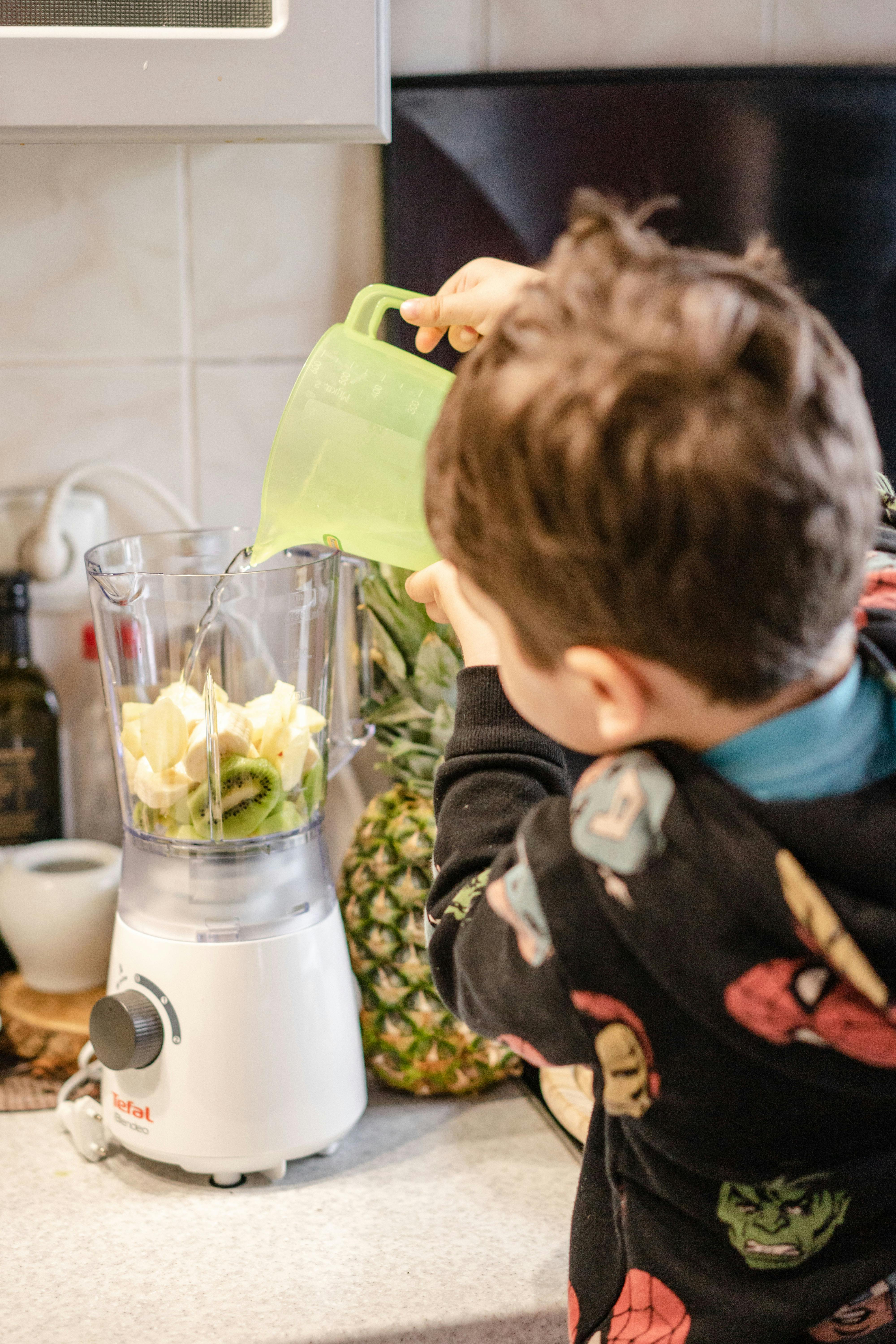Healthy Toddler Smoothies: Nutrition-Packed Recipes and Tips
Getting toddlers to eat a balanced diet can be a daily struggle for many parents. That’s where healthy toddler smoothies come into play—offering a delicious and nutritious solution. In this comprehensive guide, you’ll learn how to make the best smoothies for toddlers, packed with essential nutrients to support growth, immunity, and energy.

Understanding the Fundamentals
Healthy toddler smoothies are blended beverages made with fruits, vegetables, dairy or dairy alternatives, and additional nutrient boosters tailored to toddlers’ unique dietary needs. They’re not just tasty—they’re strategic tools for improving a child’s nutrition.
Historically, parents have relied on simple meals like purees and cereals. Smoothies represent a modern evolution, combining convenience with nutrient density. They’re especially effective for picky eaters who reject solid fruits or veggies.
1.1 Nutritional Needs of Toddlers
At ages 1-3, toddlers require around 1,000–1,400 calories per day with balanced portions of protein, carbs, healthy fats, and essential vitamins. Smoothies help fill those gaps by packing multiple food groups into one drink.
For example, a smoothie made with spinach, banana, Greek yogurt, and flaxseeds provides calcium, fiber, protein, and omega-3s. It’s a nutritional powerhouse in just one cup.
1.2 Benefits of Smoothies Over Traditional Snacks
Compared to processed snacks, smoothies offer natural sweetness, whole-food nutrients, and customizable portions. They’re also easier on developing teeth and digestive systems.
Moreover, smoothies can double as hydration, especially when made with coconut water or milk. This versatility makes healthy toddler smoothies a go-to option for busy parents.
Practical Implementation Guide
Now that we understand the benefits, let’s explore how to integrate healthy toddler smoothies into daily routines. With a few simple steps, you’ll create delicious blends your toddler will love while ensuring optimal nutrition.

2.1 Actionable Steps
- Choose a Base: Use milk, almond milk, coconut water, or plain yogurt for calcium and hydration.
- Add Fruits & Veggies: Try banana, mango, spinach, or avocado. Frozen options work well too.
- Include Healthy Fats: Add chia seeds, flaxseeds, or nut butters for essential fatty acids.
- Boost with Extras: Consider oats, protein powder (age-appropriate), or probiotics for added value.
- Blend & Serve: Mix until smooth. Use fun cups or straws to encourage drinking.
2.2 Overcoming Challenges
Common issues include texture resistance, taste rejections, or lack of variety. Here are a few tips to navigate these:
- Use frozen fruits for a thicker consistency toddlers may enjoy
- Introduce new ingredients gradually to avoid sudden taste shifts
- Rotate flavors weekly to keep smoothies exciting and nutritious
Expert tip: Let toddlers assist in choosing or adding ingredients. This involvement boosts interest and compliance.
Advanced Applications
Once your toddler is accustomed to basic smoothies, it’s time to explore advanced combinations that address specific health needs like immunity, digestion, or energy levels. These smoothies often contain functional superfoods and require strategic planning.

3.1 Immune-Boosting Smoothies
Combining citrus fruits, carrots, and Greek yogurt supports vitamin C and probiotic intake. A blend like orange, pineapple, carrot, and yogurt can enhance immune function naturally.
Studies show probiotics can reduce the incidence of colds in toddlers by up to 30%, making these smoothies a smart seasonal addition.
3.2 Digestive Support Blends
Blends with banana, oats, and kefir promote digestive health. These ingredients provide soluble fiber and probiotics, easing common toddler issues like constipation or irregular bowel movements.
Pairing with pear or prune adds natural sweetness and extra fiber, creating a powerful daily digestive aid.
Future Outlook
The demand for healthy toddler smoothies is expected to grow, with new products and recipes emerging regularly. Innovations include plant-based protein powders for kids and pre-measured smoothie packs tailored to toddler needs.
Parents can prepare by investing in a quality blender, trying new superfoods like hemp seeds or dragon fruit, and staying updated with pediatric dietary recommendations. Smoothies will continue to evolve as a top method for toddler nutrition.
Conclusion
Healthy toddler smoothies offer convenience, variety, and essential nutrition. Key takeaways include understanding your toddler’s needs, following a structured recipe process, and evolving smoothies as your child grows.
Start today by picking 2-3 ingredients your toddler loves and blending a test smoothie. The benefits are immediate—and delicious! For best results, make smoothies a daily habit in your routine.
Frequently Asked Questions
- Q: What’s the best time to give a smoothie? Morning or snack time works best when toddlers are most receptive to new flavors.
- Q: How do I start making smoothies for my toddler? Begin with 3 ingredients your child already enjoys, then gradually add new ones.
- Q: How much time does it take to prepare a toddler smoothie? Most recipes take under 5 minutes from prep to serving, especially with frozen fruits.
- Q: Are smoothies expensive to make? Not necessarily—use seasonal fruits and store-brand yogurts to keep costs low.
- Q: How do smoothies compare to whole foods? Smoothies are great for combining ingredients quickly but should complement, not replace, whole meals.
- Q: Are toddler smoothies hard to make? No, they’re one of the easiest toddler-friendly recipes—no cooking required!
- Q: Can smoothies be used in daycare or school lunches? Yes, store them in a thermos or insulated bottle and ensure they’re consumed within 2 hours.
